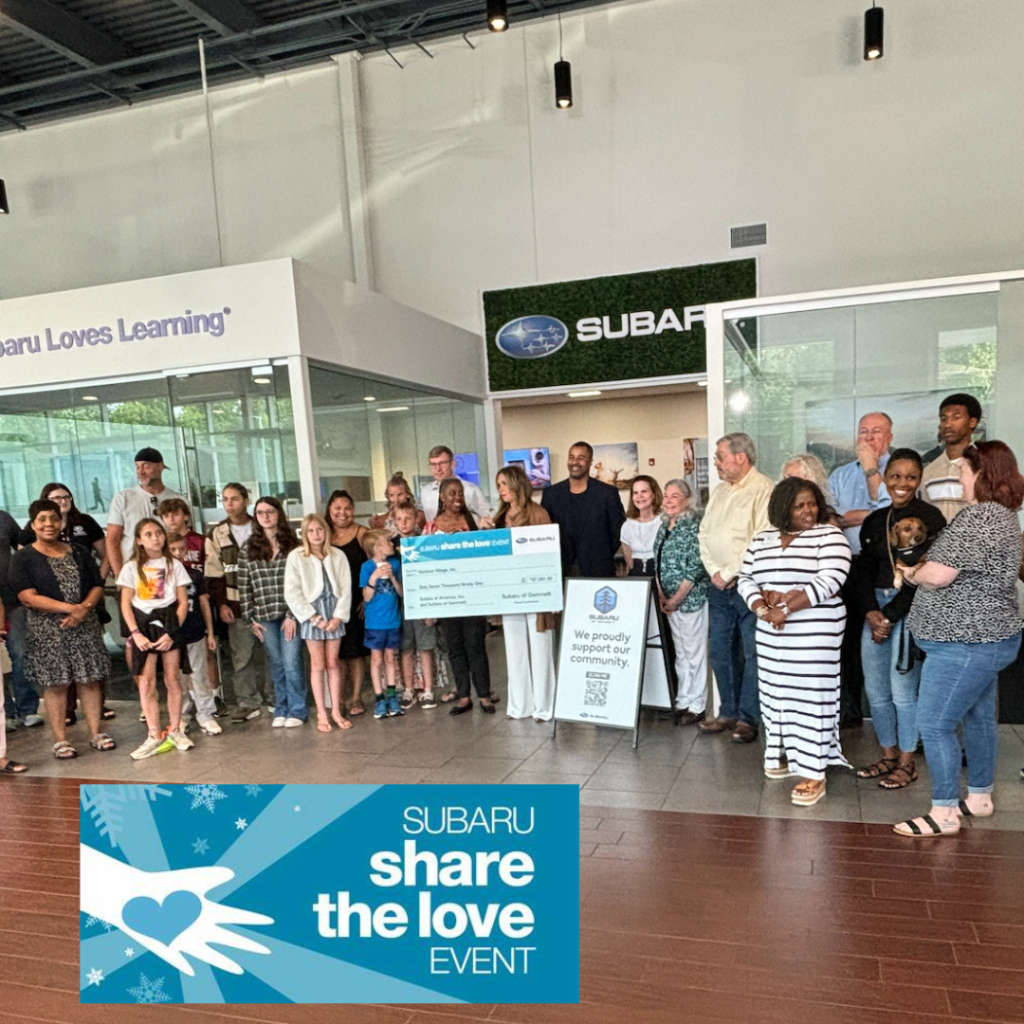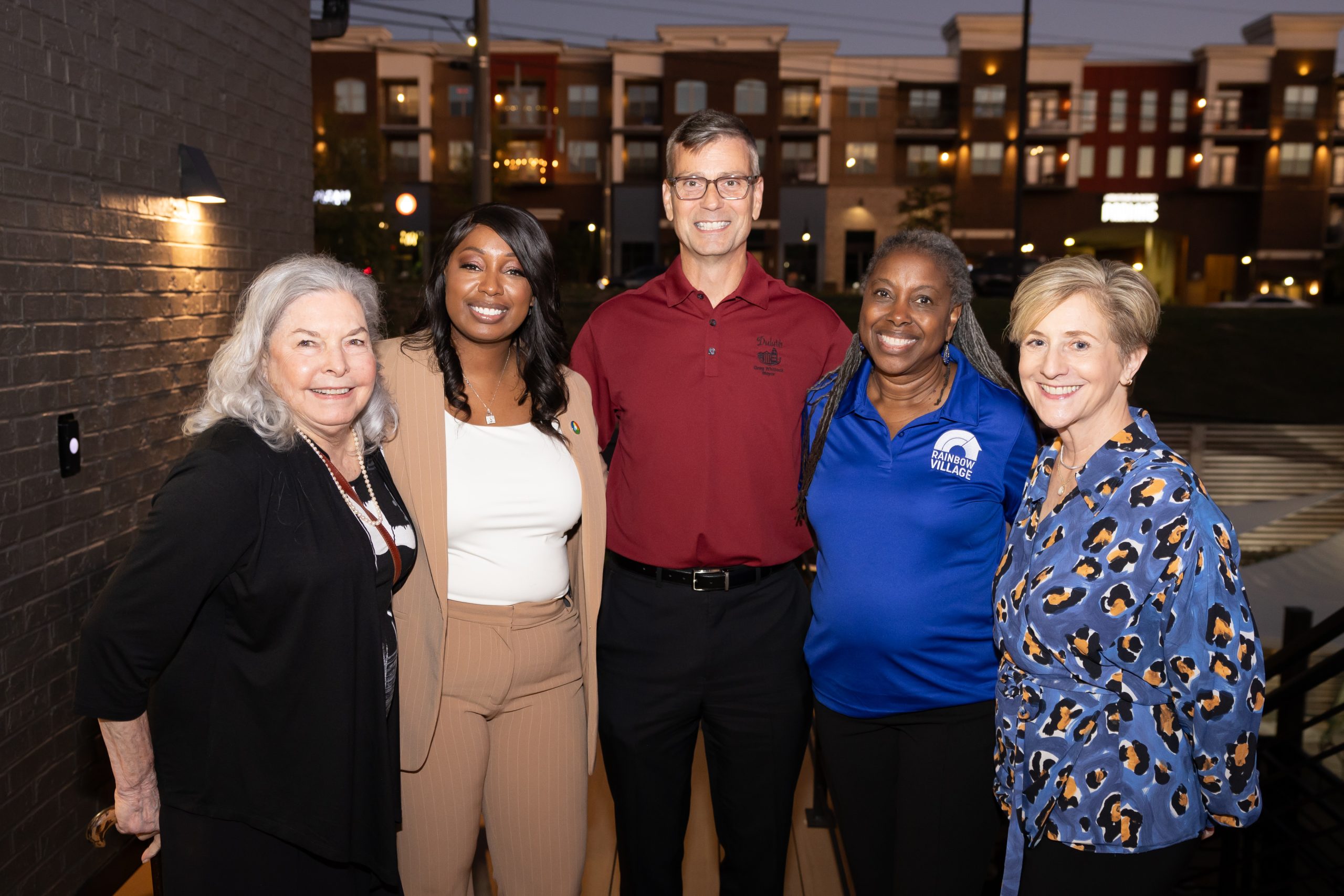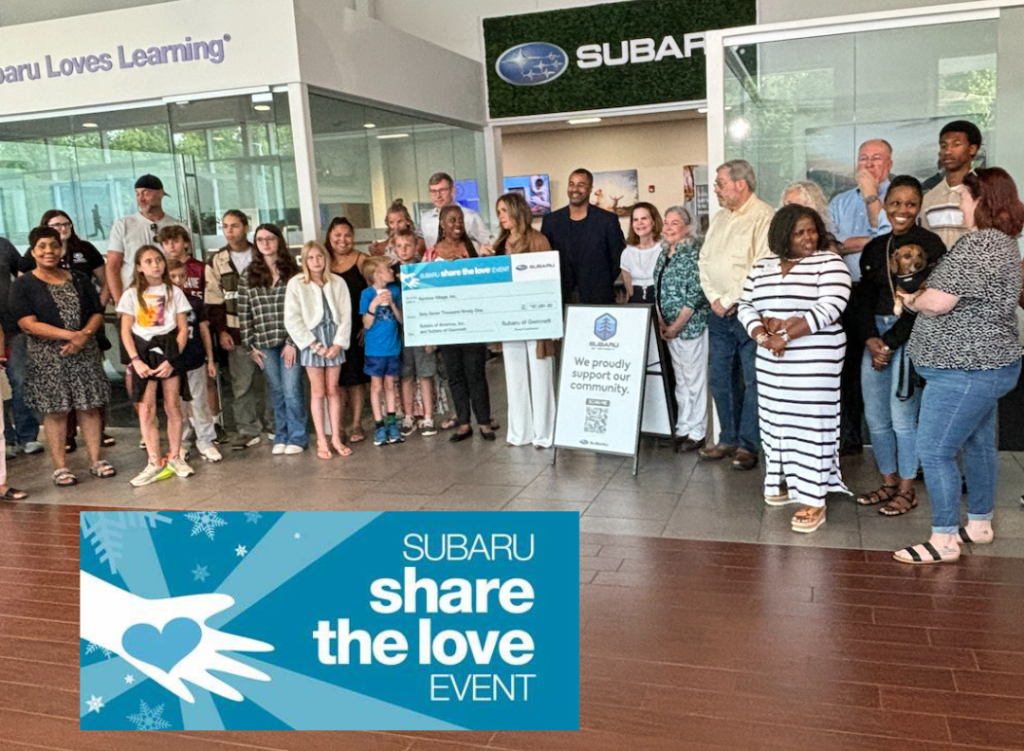
Homelessness is not merely a personal issue that impacts an individual or family alone. It’s a community issue… a national issue… a global issue. With homelessness statistics on the rise throughout the U.S., as members of a community – and the human race – it’s imperative that we all pull up a chair to the proverbial table to explore ways to end homelessness once and for all. This is particularly true for local governments, corporations, and nonprofits that count the unhoused among their community or clientele. To understand the critical nature of this discussion, it’s imperative to examine the troubling statistics, the public perceptions about homelessness, and the impact of homelessness on surrounding communities. To support the assertion that community partnerships can play a crucial role in ending homelessness, this paper will examine a promising nonprofit model in Metro Atlanta that is dedicated to breaking the cycle of homelessness among families.
The Ugly Truth About Homelessness
Each year, the U.S. Department of Housing and Urban Development conducts Point-in-Time (PIT) Counts of individuals experiencing homelessness, both in shelters and on the streets, on a single night in January. Unfortunately, the numbers from the most recently released PITs illustrate an ugly truth. The statistics are rising, not shrinking. The number of people experiencing homelessness on a single night increased by 12% from 2022 to 2023 and by 18% from 2023 to 2024. While the 2025 PIT numbers had not been released at the time of publication of this report, predictions suggest that the upward trend will continue. What’s worse is that these PIT counts only reflect those people experiencing homelessness who were living on the streets or sought refuge in emergency shelters, transitional housing, and Safe Havens on a single night. It does not include the “hidden homeless” who have no permanent housing of their own and seek shelter in the home of a friend or family member, cobble together enough money to pay for a hotel room, or spend the night in their car.
Public Perceptions About Homelessness
“There is a direct line between how the public views homelessness and the policy choices leaders make. Many blame homelessness on the person experiencing it rather than the shortage of affordable housing, lack of a living wage, childhood trauma, expensive and inaccessible health care, or the countless other reasons that make a person vulnerable to losing their home. This gap between public perceptions and reality creates a cycle of misunderstanding that reduces public support for the policies we need to solve this crisis.”
~ 501(c)(3) nonprofit Invisible People
Following the COVID-19 pandemic, the 501(c)(3) nonprofit Invisible People conducted a study to gauge the public’s perception of homelessness. What the organization found was that the public fell into four basic categories in their views on homelessness – whether it’s what they saw on the streets, what they learned from the local news, what they viewed on social media, or what they heard via word of mouth:
- Involved Advocates who want to be part of the solution = 31% of respondents
- Hesitant Helpers who want to help but don’t know how = 33% of respondents
- Active Ignorers who want it all to just go away = 19% of respondents
- Stubborn Skeptics who only want to help those whom they deem deserve it = 17% of respondents
The study also revealed that the top beliefs attributing to homelessness included drug/alcohol addiction, mental health issues, job loss/unemployment, personal finance issues, housing costs, and eviction/foreclosure. Roughly 50% of respondents indicated they felt afraid of homeless people, and nearly 60% felt powerless to help a homeless person when they encountered them. The good news is that the overwhelming majority of respondents supported policies addressing homelessness, including expanded mental health services, outreach services, access centers, permanent supportive housing, affordable housing, overnight shelters, public housing, rental assistance, and rent control.
The Impact of Homelessness on Communities and Small Businesses
Let’s set aside the human experience of homeless individuals and families for just a moment and examine the potential impact of that experience on communities and local businesses. Unsheltered individuals living out in the open and panhandling to survive are not only at the mercy of the elements, but, as indicated by a 2020 study conducted by Invisible People, they also have the power to make a negative impression on residents and guests of the area. Sadly, the unhoused are sometimes viewed as a blight on society.
As a municipality, the sight of homeless encampments or unsheltered individuals may lead people to believe your city does not have their best interests at heart. As a local company, potential patrons may opt against visiting your business if they feel a homeless person might approach them. Appearances and impressions aside, high homeless populations can create a strain on public resources and services, including emergency shelters and indigent healthcare.
In truth, a wide range of reasons may lead a person or an entire family to become homeless. While drug use or mental illness may play a role in some instances, a string of misfortunes can take a family from their own home sweet home to a state of homelessness. They may be escaping domestic violence, have lost their job after living paycheck to paycheck, or have been evicted after electing to pay medical bills before their rent. Regardless of the reasons that led them there, no one should have to suffer the trauma of homelessness. Homelessness can happen to anyone, and that’s why they deserve the help of their fellow man, not blame or scorn. To that end, local governments, nonprofits, and corporations must work in tandem to explore mitigation measures, identify practical solutions, and provide sustainable housing.
The Rainbow Village Nonprofit Model
Launched in 1991, the 501(c)(3) nonprofit Rainbow Village has employed a community-based model from its inception. It began as Rainbow House at the behest of Reverend Joel P. Hudson and the parishioners at Christ Church Episcopal in Norcross, Georgia, to aid homeless families in the local community. Growing in response to the need, it has evolved over more than three decades into a transitional housing complex that offers transformational programming designed to equip its residents to achieve self-sustainability and thrive beyond the boundaries of what is now known as Rainbow Village.
To continue growing to meet the needs, the leadership at Rainbow Village has endeavored to foster a “village” beyond the Village, walking alongside its residents and allowing the organization to continue providing help, Hope, Housing, and Healing to families experiencing homelessness. That village consists of corporate, faith, and community partners – like the City of Duluth and Gwinnett County, where Rainbow Village is based.
“As a nonprofit organization, Rainbow Village relies on grants and donations to fund our programs,” said Melanie Conner, the nonprofit’s CEO. “But many times, that’s just enough to keep the lights on. To truly combat homelessness, we must do more than the status quo. We must rise to meet the challenge. And there’s no way we could rise without the support of Corporate, Community, and Faith Partnerships. They fuel growth and awareness, and they often supply members to our board of directors and ambassadors to the community. Most importantly, they have a hand in supporting our mission at every level – from donating funds for our Capital Campaign with a goal of more than doubling the number of families we can serve to grabbing a paint roller and prepping an apartment for an incoming family to volunteering so our Academy students are engaged and having fun during summer break. In return, the rewards of helping families in need take team building and community service to new heights. We are truly indebted to all our Partners and believe we’re creating a model that other nonprofits throughout the nation can follow.”

Corporate Partnership Snapshot
On the corporate front, Subaru of Gwinnett has really stepped up to the role of partner through its year-round involvement with Rainbow Village. Its team members host family engagement events for the residents of the transitional housing program, such as the Summer Bash and Holiday Shoppe. The Duluth-based dealership has also selected Rainbow Village as its Hometown Charity for the carmaker’s annual Subaru Share the Love event. The latter has resulted in the raising of $435,472 to date in support of Rainbow Village’s mission. For the past five years, Northside Hospital, one of Georgia’s leading healthcare systems, has served as the presenting sponsor of all Rainbow Village’s awareness and fundraising events. Northside Hospital has supplied keynote addresses at events, served as ambassadors for the nonprofit to the public, and invested in the Rainbow Village mission. To date, Northside Hospital has donated more than a quarter of a million dollars to Rainbow Village, with thousands more raised through the events it sponsors.
“Both Northside Hospital and Rainbow Village want our community to live life to its fullest,” said Debbie Bilbro, CEO of Northside Hospital Gwinnett and Northside Hospital Duluth, and a member of the Rainbow Village Board. “While Northside focuses on the medical aspect of wellness, Rainbow Village concentrates on financial health, family stability, and mental wellness through its programs. I’ve never seen or been part of an organization that is so successful at living out its mission and vision statement. They help their residents turn their lives around, go forth, and be fruitful. Through accountability and success coaching, they’re making it happen for families in need.”

Faith Partnership Snapshot
On the Faith Partner front, Johns Creek, GA-based Perimeter Church has endeavored to integrate Rainbow Village into the life of the church. Each summer, as part of its Rush Conference, groups of high school student leaders descend upon the Rainbow Village campus to serve in various impactful ways. The congregation also regularly supports the nonprofit through in-kind donations, Perimeter Christian School Serve Days, and monthly financial support from Community Outreach efforts to help fund special events and holidays. Perimeter is just one example of many faith partners that collectively fill volunteer needs, provide sustainable funding, and cover the Rainbow Village mission in prayer.
“Perimeter Church is committed to seeking an end to homelessness by partnering with Rainbow Village, offering not just shelter, but hope, dignity, and a path to a brighter future for those in need,” said Pollye Pope, Perimeter Church Director of Community Outreach. “Together, we are building a community where everyone has the opportunity to flourish physically, emotionally, and spiritually.

Community Partnership Snapshot
On the Community Partner front, the City of Duluth has been a steadfast supporter of Rainbow Village, recognizing its vital role as a beacon of hope in Gwinnett County, transforming the lives of families experiencing homelessness. Not only does Rainbow Village provide transitional housing to Duluth neighbors in need, but it also offers essential services, including financial literacy education, mental health counseling, and life skills training.
The city acknowledges the organization’s capacity and expertise in addressing housing insecurity and is aligned with its mission to promote self-sufficiency. Rainbow Village’s work directly supports the FORWARDuluth Comprehensive Plan, which envisions the development of 2,000 living units within walking distance of downtown Duluth. By fostering stability for vulnerable families, Rainbow Village strengthens the broader community, ensuring that families transition from crisis to independence and become engaged, contributing citizens.
Duluth’s leadership has formally expressed its support for Rainbow Village’s efforts to expand affordable housing options and has advocated for favorable responses from local agencies, including the Gwinnett County Housing and Community Development Division. This partnership underscores the city’s commitment to sustainable solutions for homelessness and reinforces the impact of Rainbow Village’s holistic approach to housing and empowerment.
Having garnered attention at the county level, Rainbow Village has been recognized for its exceptional commitment to empowering families and fostering economic stability through its comprehensive programs and housing initiatives in Gwinnett County. County leaders have demonstrated strong support for Rainbow Village and its mission. What’s more, Rainbow Village’s “Building Homes, Building Hope” capital campaign, which aims to more than double its capacity, directly aligns with Gwinnett County’s strategic goal of increasing access to affordable and workforce housing. Acknowledging the critical need for expanded housing solutions, the Gwinnett County Board of Commissioners unanimously voted to award $5 million toward the project. This significant investment underscores the county’s dedication to supporting Rainbow Village as it grows to meet the evolving needs of the community.
Gwinnett County Chairwoman Nicole Love Hendrickson emphasized the importance of this partnership, stating, “Rainbow Village has demonstrated an unwavering dedication to empowering families and helping them work toward economic prosperity. The expansion of their campus will address a critical need in our community, and Gwinnett County is proud to support this transformational project.”
Gwinnett County remains committed to standing alongside Rainbow Village throughout the project’s implementation and beyond, ensuring that more families have the opportunity to achieve long-term stability and self-sufficiency.
The Benefits of Pulling Up a Chair
By becoming involved with a nonprofit organization on a mission to break the cycles of homelessness, corporate, faith, and community partners all share several key benefits:
- Positive Community Impact – By making headway against homelessness, all partners share an opportunity to make a meaningful difference in the communities where they live, work, and worship.
- Boosted Brand Awareness and Reputation – While this is an obvious benefit for corporate partners, churches and municipalities can also benefit from a boost in public visibility and perception that comes from being aligned with a nonprofit. It’s a chance to tap into the network of supporters for the nonprofit, particularly those who may not be familiar with your city, church, or company. An improved brand reputation can lead to greater loyalty and trust among customers, employees, citizens, and church members.
- A Wealth of Volunteer Opportunities – Supporting nonprofits provides employees and congregation members with endless opportunities to volunteer, helping them develop skills and feel more connected to their company, community, or church’s values.
Benefits of fostering partnerships with nonprofits that are more specific to companies include opportunities to initiate team-building experiences, aid in employee retention and attraction, enhance employee well-being, and improve corporate social responsibility. For faith partners, incorporating a nonprofit into the life of their church can help provide spiritual fulfillment to their members, expand outreach efforts, enhance their members’ financial stewardship, and strengthen the community surrounding their church. For community partners, they can work closely with nonprofit organizations to address the root causes of homelessness, advocate for change, and identify and bridge gaps where needed.
Individuals Can Make a Difference, Too
While the enduring issue of homelessness may seem daunting to an individual who wants to make a difference, there are several key ways to get involved and make a difference. After researching nonprofits in their area that address underserved communities, they can explore opportunities that best reflect their desire to give back.
- Volunteerism: Once they’ve found a nonprofit that addresses the issue of homelessness, they can reach out to the organization to learn about the available volunteer opportunities. For example, at Rainbow Village, volunteers are continually sought to support the Academy program for school-aged residents, maintain the landscaping on the campus, prepare apartments for incoming families, and serve at both community-wide and fundraising events.
- Philanthropy: Needless to say, a 501(c)(3) nonprofit organization relies on grants, sponsorships, and individual donations to continue to provide much-needed programs and shelter to unhoused individuals and families. Every donation makes an impact. At Rainbow Village, a donation of $250 provides housing, childcare, and enrichment, as well as adult learning and development, and family care and emergencies for a single mom with two children for a full day.
We Can All Have a Hand in Ending Homelessness
“Gentle reminder: People experiencing homelessness deserve to experience the type of love that goes to battle alongside them, not against them.” — Love Beyond Walls
What is clear is that doing nothing only allows the homeless issue to persist and grow. However, if we all work together at the community level, we can move the needle in the opposite direction for one person or family at a time. Commit to battle alongside the unhoused to find – not just shelter for the night – but the solution.
Sources: https://www.hudexchange.info/programs/hdx/pit-hic/#2024-pit-count-and-hic-guidance ; What America Believes About Homelessness – Invisible People

